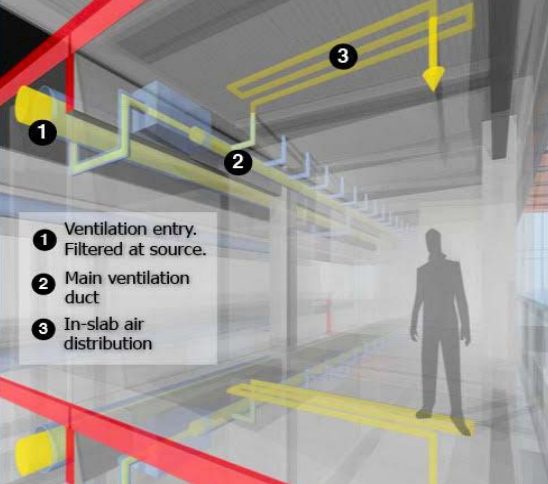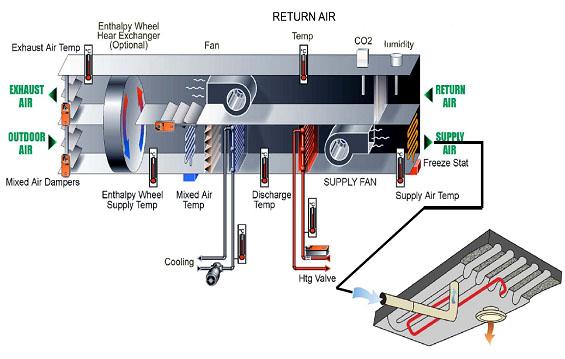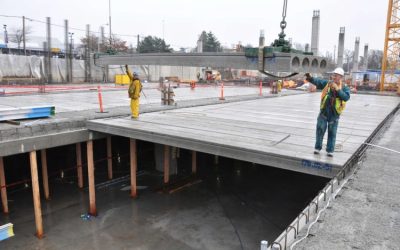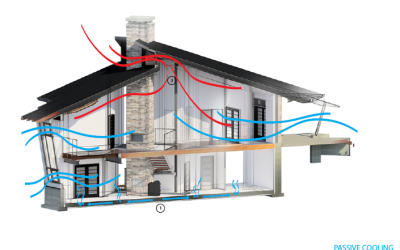Integrated Thermal Storage Ventilation – How It Works – Part 2
During normal operation, heating or cooling can be introduced from either ceiling or as displacement ventilation at floor level. During disruptive events stored energy continues to provide habitable spaces for a longer time (image courtesy of B+H Architects).

The system is guided through intelligent TermoBuild plugin software which empowers users to better manage comfort, resilience and energy inside of the buildings while reducing peak power consumption stress on the energy grid. By dialing-back the demand to the source it assists with the existing loads on the power grid supply capacity.
When existing HVAC technologies are integrated with hollowcore slabs and thermal mass principles, the need for larger and more costly equipment is thereby reduced by up to 45% to 50%. The result of such integrated design eliminates the need for prefabricated ceiling panels, chilled beams, pipes or tubes that are common in typical “wet systems”.
Unlike wet systems that are can be costly and do not guarantee comfort due to their lack of integration with other building elements in the structure, an integrated design can outperform not only in terms of overall comfort but in energy efficiency, resiliency and sustainability.
Radiant air conditioning systems with “active” thermal storage work intuitively with fan assisted ventilation system that pushes treated fresh air through a series of main ducts fed into branch ducts formed within the hollow core slabs of ceilings or floors (see figure below).
As air passes along the ducts the concrete warms or cools the fresh air before supplying it to the occupied space. With stricter energy consumption guidelines, the need is growing for carbon foot print reduction targets, energy storage, resilience, net-zero energy buildings. “Smart City” initiatives are in search of improved and balanced energy infrastructure management initiatives.
They are at the center of this new and emerging shift to form a valuable part in the strategic and cost effective response to external change.

Essentially turning a buildings heating and cooling system into batteries, utilizing existing infrastructure, can reveal performance improvement opportunities aligned with latest trends, while providing a post disaster resilience strategy in the age of climate change that ensures economic viability of businesses and cities.
Integration of hollow core slabs with indoor comfort systems invites decision makers to shift the focus from individual non-integrated products to generic controls driven by thermo-active integrated systems that meet broader customer needs as they relate to: comfort and productivity, environmental footprint reduction, continuity of business functions, resilience, future-proofing real estate value, and non-utility financial benefits that exceed energy savings several times over.




